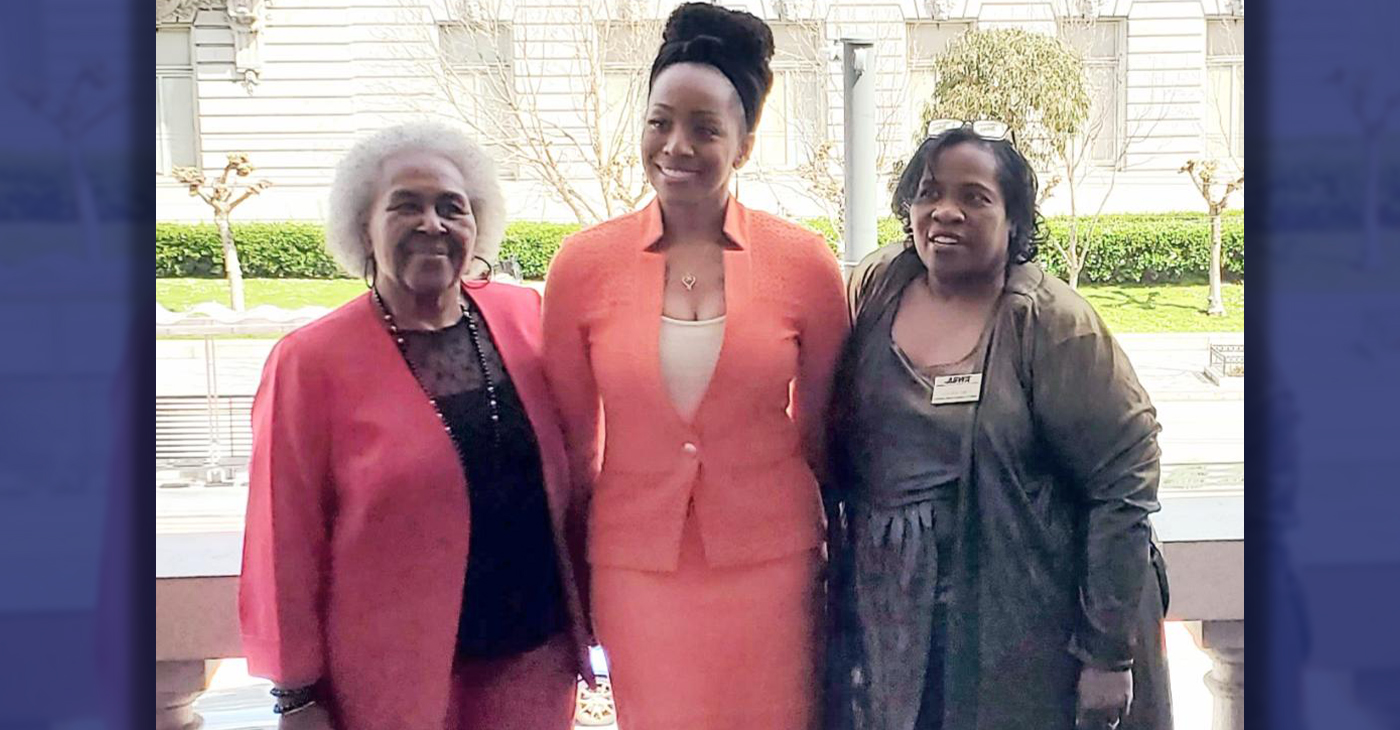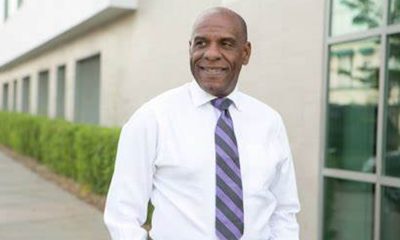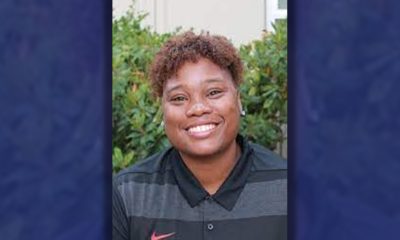Bay Area
Cautious Parents Weigh Decision to Give Children Under 5 COVID Vaccine
“There is definitely still a need for vaccinations for the whole population,” said Dr. Lucia Abascal, a physician and researcher at CDPH. “There is this idea that Omicron is milder, but if we look at children’s data in this age group, we can actually see that hospitalizations peaked as well as deaths. We have more and more evidence that kids are at an acute risk of COVID.”

By Edward Henderson, California Black Media
Antonio and Tenaja Kizzie, a San Diego area couple, are parents of a 3-year-old daughter. Although both parents are vaccinated and boosted, the Kizzies have reservations about giving their toddler the COVID-19 vaccine the Centers for Disease Control and Prevention (CDC) recommended last week for children younger than 5 years old.
“It’s one thing to feel like her body is still developing and growing. She’s been vaccinated for everything else for things that have been around for years. It’s a little scary thinking about something that’s new. We don’t want to jump in right now,” Tenaja told California Black Media. “We just want to wait a little bit and see the side effects for other kids in her age group and reassess from there.”
Her husband chimed in.
“We believe in the science, we believe vaccines work, but when it comes to the under-fives, just being a parent we’re a bit more hesitant to give her the vaccine so far. We’re waiting to see how it goes with other under 5 kids that get the vaccine. Even though science and logic say yes, as a new parent you’re extra cautious,” Antonio said.
The Kizzies are not alone.
Numbers the CDC released at the end of May indicate that hesitancy about vaccinating their children is high among parents across the country. Although the U.S. Food and Drug administration approved COVID vaccines for children between the ages of 5 and 11 last October, only about 30% of kids in that age range have received the shot.
“For those families that are hesitant and questioning, I try to understand what their fears and questions are. I try to remind them that we are in this together. I care about the health and wellbeing of their children, and I will always suggest the best possible course for them,” said Dr. Jennifer Miller, a pediatrician with East Bay Pediatrics, a medical practice with offices in Berkeley and Orinda.
Miller was speaking during a medical panel co-hosted by the California Department of Public Health (CDPH) and Ethnic Media Services (EMS). The discussion was held to offer information about vaccinating children 6 months to 4 years old against COVID-19 to parents, caregivers and the media.
“I let them know that ultimately it is their decision to make, and I am here as a resource,” Miller added. “It is normal to be afraid of the unknown and to want to protect your child. With that in mind, vaccination is the best protection around.”
The U.S. Food and Drug Administration authorized emergency use of COVID-19 vaccines made by Moderna, Pfizer and BioNTech earlier this month. The agency’s approval came on the heels of news that COVID-19 is now the fifth leading cause of death in children 1-4 years old and the fourth leading cause of death for children younger than 1.
“These are sobering statistics for all of us,” said Sandy Close, EMS director and moderator of the news briefing. “Vaccination is an important tool to protect their long-term health against COVID-19 and helps achieve full family protection against this deadly virus.”
Panelists said it is a myth that COVID does not affect children. The CDC reports that 1 in 5 hospitalized children end up in the ICU. And during the Omicron surge, children were hospitalized five times more than in the Delta surge.
“There is definitely still a need for vaccinations for the whole population,” said Dr. Lucia Abascal, a physician and researcher at CDPH. “There is this idea that Omicron is milder, but if we look at children’s data in this age group, we can actually see that hospitalizations peaked as well as deaths. We have more and more evidence that kids are at an acute risk of COVID.”
Abascal detailed the steps of the vaccine approval process at the state and federal levels. An independent expert panel reviewed the data that Moderna and Pfizer provided and unanimously voted that the FDA approve the vaccine. The CDC was the final step of approval for the vaccine at the federal level.
Before California recommends any COVID vaccine, it is reviewed by The Western States Scientific Safety Review Workgroup, a commission comprising medical professionals and scientists convened by Washington, Oregon, Nevada and California.
Children 3 years old and above will be eligible to receive vaccines at pharmacies. However, children under 3 will need to get vaccinated at a pediatrician’s office or a community clinic.
California has purchased enough vaccinations for every child in the state. The first shipment of 500,000 doses will arrive next week. About 2.2 million children are eligible for vaccination in California.
The Moderna vaccine is a two-dose regimen like the adult shot, with a one-month wait between doses. The Pfizer vaccine requires three doses. The first dose is followed by the second 21 days later and the final dose comes 60 days after that.
Authorities familiar with the vaccine trials say the side effects of minor fever and pain at the injection site may be stronger for children who receive the Moderna shot.
Dr. Sarah Takekawa, an obstetrician-gynecologist, who is currently raising three children under age 5, was also a panelist.
Takekawa spoke to some of the concerns pregnant women may have. She said she was fully vaccinated before conceiving her third child. She received her booster while pregnant.
“I have seen firsthand what COVID-19 infection can do to otherwise extremely healthy young women during their pregnancies. Watching adults who are otherwise healthy succumb to the disease, it seems easy to us to make this decision about wanting to get vaccinated and encouraging other parents to have their children vaccinated.
Visit Vaccinate All 58 to learn more about the safe and effective vaccines available for all children in California ages 6 months and older.
Activism
Oakland Post: Week of April 24 – 30, 2024
The printed Weekly Edition of the Oakland Post: Week of April 24 – 30, 2024

To enlarge your view of this issue, use the slider, magnifying glass icon or full page icon in the lower right corner of the browser window. ![]()
Alameda County
DA Pamela Price Stands by Mom Who Lost Son to Gun Violence in Oakland
Last week, The Post published a photo showing Alameda County District Attorney Pamela Price with Carol Jones, whose son, Patrick DeMarco Scott, was gunned down by an unknown assailant in 2018.

Publisher’s note: Last week, The Post published a photo showing Alameda County District Attorney Pamela Price with Carol Jones, whose son, Patrick DeMarco Scott, was gunned down by an unknown assailant in 2018. The photo was too small for readers to see where the women were and what they were doing. Here we show Price and Jones as they complete a walk in memory of Scott. For more information and to contribute, please contact Carol Jones at 510-978-5517 at morefoundation.help@gmail.com. Courtesy photo.
Bay Area
State Controller Malia Cohen Keynote Speaker at S.F. Wealth Conference
California State Controller Malia Cohen delivered the keynote speech to over 50 business women at the Black Wealth Brunch held on March 28 at the War Memorial and Performing Arts Center at 301 Van Ness Ave. in San Francisco. The Enterprising Women Networking SF Chapter of the American Business Women’s Association (ABWA) hosted the Green Room event to launch its platform designed to close the racial wealth gap in Black and Brown communities.

By Carla Thomas
California State Controller Malia Cohen delivered the keynote speech to over 50 business women at the Black Wealth Brunch held on March 28 at the War Memorial and Performing Arts Center at 301 Van Ness Ave. in San Francisco.
The Enterprising Women Networking SF Chapter of the American Business Women’s Association (ABWA) hosted the Green Room event to launch its platform designed to close the racial wealth gap in Black and Brown communities.
“Our goal is to educate Black and Brown families in the masses about financial wellness, wealth building, and how to protect and preserve wealth,” said ABWA San Francisco Chapter President LaRonda Smith.
ABWA’s mission is to bring together businesswomen of diverse occupations and provide opportunities for them to help themselves and others grow personally and professionally through leadership, education, networking support, and national recognition.
“This day is about recognizing influential women, hearing from an accomplished woman as our keynote speaker and allowing women to come together as powerful people,” said ABWA SF Chapter Vice President Velma Landers.
More than 60 attendees dined on the culinary delights of Chef Sharon Lee of The Spot catering, which included a full soul food brunch of skewered shrimp, chicken, blackened salmon, and mac and cheese.
Cohen discussed the many economic disparities women and people of color face. From pay equity to financial literacy, Cohen shared not only statistics, but was excited about a new solution in motion which entailed partnering with Californians for Financial Education.
“I want everyone to reach their full potential,” she said. “Just a few weeks ago in Sacramento, I partnered with an organization, Californians for Financial Education.
“We gathered 990 signatures and submitted it to the [California] Secretary of State to get an initiative on the ballot that guarantees personal finance courses for every public school kid in the state of California.
“Every California student deserves an equal opportunity to learn about filing taxes, interest rates, budgets, and understanding the impact of credit scores. The way we begin to do that is to teach it,” Cohen said.
By equipping students with information, Cohen hopes to close the financial wealth gap, and give everyone an opportunity to reach their full financial potential. “They have to first be equipped with the information and education is the key. Then all we need are opportunities to step into spaces and places of power.”
Cohen went on to share that in her own upbringing, she was not guided on financial principles that could jump start her finances. “Communities of color don’t have the same information and I don’t know about you, but I did not grow up listening to my parents discussing their assets, their investments, and diversifying their portfolio. This is the kind of nomenclature and language we are trying to introduce to our future generations so we can pivot from a life of poverty so we can pivot away and never return to poverty.”
Cohen urged audience members to pass the initiative on the November 2024 ballot.
“When we come together as women, uplift women, and support women, we all win. By networking and learning together, we can continue to build generational wealth,” said Landers. “Passing a powerful initiative will ensure the next generation of California students will be empowered to make more informed financial decisions, decisions that will last them a lifetime.”
-

 Activism4 weeks ago
Activism4 weeks agoOakland Post: Week of March 27 – April 2, 2024
-

 #NNPA BlackPress4 weeks ago
#NNPA BlackPress4 weeks agoBeloved Actor and Activist Louis Cameron Gossett Jr. Dies at 87
-

 Community1 week ago
Community1 week agoFinancial Assistance Bill for Descendants of Enslaved Persons to Help Them Purchase, Own, or Maintain a Home
-

 Activism3 weeks ago
Activism3 weeks agoOakland Post: Week of April 3 – 6, 2024
-

 Business1 week ago
Business1 week agoV.P. Kamala Harris: Americans With Criminal Records Will Soon Be Eligible for SBA Loans
-

 Activism2 weeks ago
Activism2 weeks agoOakland Post: Week of April 10 – 16, 2024
-

 Community1 week ago
Community1 week agoAG Bonta Says Oakland School Leaders Should Comply with State Laws to Avoid ‘Disparate Harm’ When Closing or Merging Schools
-

 Community6 days ago
Community6 days agoOakland WNBA Player to be Inducted Into Hall of Fame





















































